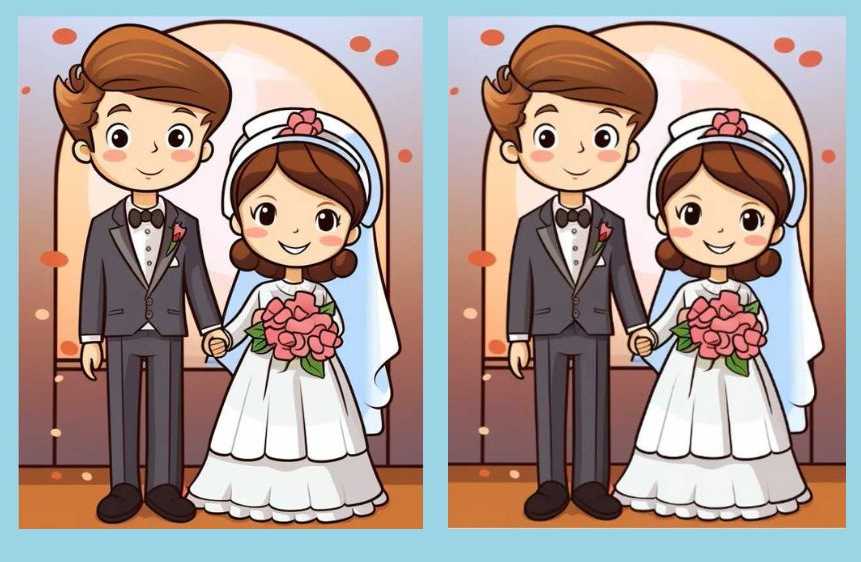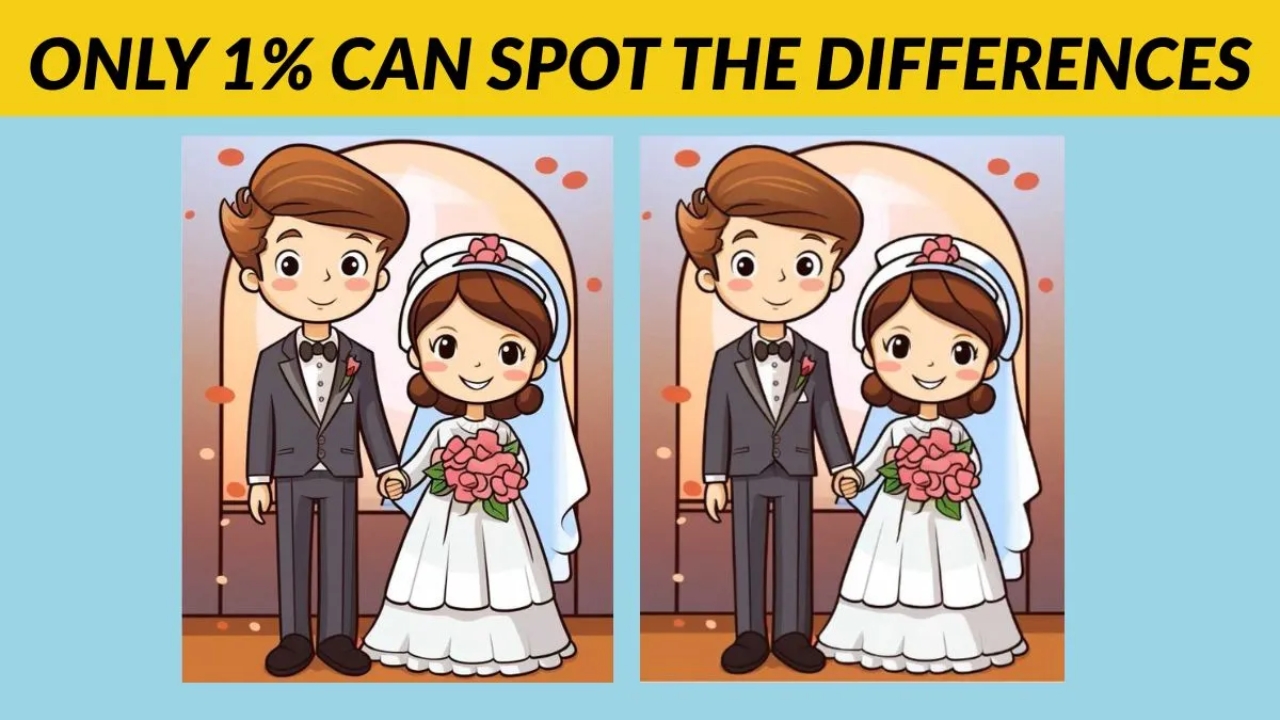Optical Illusion Find the 3 Changes in This Couple Picture Are you ready to put your observation skills to the ultimate test? This captivating brain teaser presents a delightful couple in two seemingly identical pictures, but hidden within these charming images are subtle differences waiting to be discovered. The challenge is simple yet demanding: spot all the differences between the two couple pictures in just 29 seconds!
The Science Behind Spot-the-Difference Puzzles
Cognitive training, which is designed to improve specific cognitive skills, appears to have benefits for maintaining cognitive health in older adults, according to research from the National Institute on Aging. These visual puzzles aren’t just entertaining—they’re powerful tools for enhancing brain function and sharpening your attention to detail.
Optical Illusion: Find the 3 Changes in This Couple Picture

Benefits of Regular Brain Training:
| Cognitive Function | Improvement Area | Time Investment |
|---|---|---|
| Visual Perception | Pattern Recognition | 5-15 minutes daily |
| Attention Span | Focus Duration | 10-20 minutes sessions |
| Processing Speed | Quick Decision Making | Regular practice |
| Memory Enhancement | Detail Retention | Consistent training |
How This Brain Teaser Works
The couple pictures appear identical at first glance, featuring a romantic scene with intricate details. However, careful examination reveals several carefully placed differences in colors, shapes, objects, or positioning. These subtle changes have been made to test your attention to detail and visual perception.
Expert Tips for Success
H4: Systematic Scanning Technique Start from the top-left corner and work methodically across each section. Don’t rush—even though you have 29 seconds, panic can cause you to miss obvious differences.
H4: Focus Areas to Examine Pay special attention to clothing details, background elements, facial features, and any objects in the scene. Changes often include color variations, added or removed objects, and subtle alterations in positioning.
The Cognitive Benefits You’ll Gain
Users who trained with cognitive games improved regardless of age in terms of scores and processing speed throughout sessions, suggesting that old and very old adults can improve their cognitive performance using brain training in real-life use. Regular practice with these puzzles can enhance:
- Enhanced Visual Perception: Improved ability to notice subtle environmental changes
- Increased Concentration: Better focus and sustained attention during daily tasks
- Sharper Memory: Enhanced detail retention and recall abilities
- Processing Speed: Faster cognitive responses to visual information
Challenge Results and Next Steps
Whether you successfully identified all differences within the time limit or needed a bit longer, remember that improvement comes with practice. Training to improve cognitive abilities in older people lasted to some degree 10 years after the training program was completed, according to results of a randomized clinical trial supported by the National Institutes of Health.
Government Resources for Brain Health:
Frequently Asked Questions
Q: How often should I practice spot-the-difference puzzles?
A: Experts recommend 10-15 minutes of daily cognitive training for optimal brain health benefits.
Q: Are these puzzles suitable for all ages?
A: Yes, research shows cognitive training benefits people of all ages, from children to seniors over 80.
Q: Can these exercises prevent cognitive decline?
A: While not a cure, regular cognitive training may help maintain mental abilities and slow age-related cognitive changes.
Also Read:-Optical Illusion Challenge: Find the Cat in the Cloth Wardrobe
